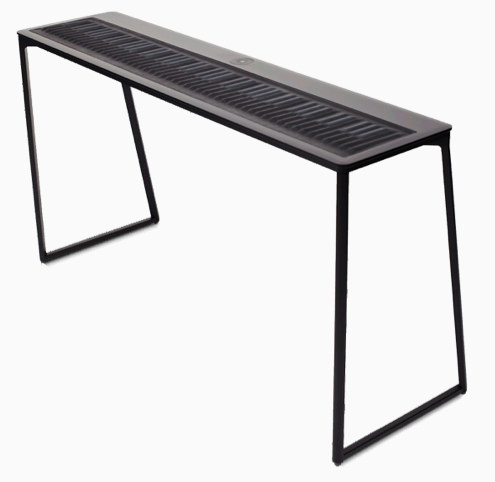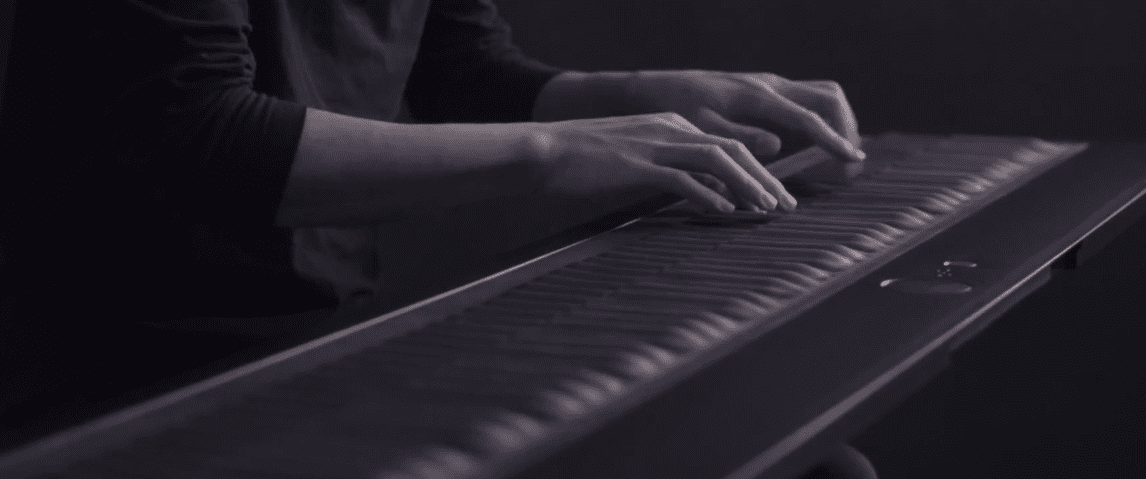The release of an innovative new stage piano gives us the perfect excuse to muse on futuristic MIDI controllers, retro piano house and the evolution of keyboard instruments.
The Guardian report on ROLI‘s new Seaboard GRAND piano, a futuristic-looking matt black instrument with a moulded rubber ‘keyboard’ and impressive polyphonic pitch bend and aftertouch features. A video on ROLI’s YouTube channel shows the instrument in action:
One sentence in The Guardian‘s endearingly enthusiastic report sticks out like a sore thumb: the claim that the piano has changed relatively little since the introduction of the first fortepianos at the start of the 18th century. In the most basic terms, yes, the sound and functionality of pianos admittedly remains largely similar to those early instruments, but the idea that the piano hasn’t evolved over the course of the last three centuries is just plain wrong.
For a start, the piano didn’t just appear out of nowhere in the 18th century. The instrument was a successor to existing stringed, keyboard-based instruments such as the harpsichord and clavichord.
The earliest fortepianos were essentially a more dynamically versatile development of the harpsichord. The names fortepiano and pianoforte themselves come from pioneering designer Bartolomeo Cristofori‘s name for his new instrument – gravicembalo col piano e forte, meaning ‘harpsichord with soft and loud’. Anyone who’s had the opportunity to play a modern replica of an early fortepiano will know just how different they sound and feel in comparison to their modern equivalents. The last three hundred years of piano development have centred around the refinement of that basic concept, leading to the more evenly toned, more easily playable and more affordable pianos that we know today.

The limited edition Seaboard GRAND
Then, of course, there are the developments and offshoots of the basic piano formula: electro-mechanical stage pianos like the Yamaha CP range; electric (as opposed to electronic) pianos from the likes of Fender, Wurlitzer and Hohner; Mellotrons; modern electronic stage pianos from the likes of Nord; Yamaha’s hugely successful Clavinova range… And that’s without even taking into account organs, sample-based piano ROMplers or, er, synthesisers.
Of course, it’s fairly safe to say that most dance producers aren’t massively concerned with 100% accuracy in piano sounds anyway. The Korg M1 piano preset remains the benchmark for dance music piano, and not many people would claim that it sounds remotely like a top-of-the-range Steinway.
However, what’s more interesting from an electronic perspective is the Seabord’s implementation of what appear to be some very advanced performance features. ROLI’s unique SEA Interface (a sensory, elastic, adaptive ‘disruptive platform sensor technology’, apparently) looks like it has incredible potential for controlling a range of instruments. Imagine the applications for electronic music: expressive real-time control of pitch bend for each note and Yamaha CS-80-style polyphonic aftertouch control of filters, vibrato or virtually any other modulation you can imagine.
Polyphonic aftertouch is particularly interesting. It’s never quite fully taken off as a standard feature on controller keyboards, partly because it’s expensive to implement, partly because it’s notoriously unreliable and we suspect largely because many people simply don’t really see the need for it. However, there are hints that it might return. Soft synths and even iOS apps open up the potential of polyphonic aftertouch and CME’s forthcoming Xkey, a 25-key USB MIDI controller which at just $99 must be the cheapest keyboard with polyphonic aftertouch ever made.
If products like the Seaboard GRAND and the Xkey represent the future of MIDI controllers we can’t wait to see what electronic musicians do with them.
The limited edition Seaboard GRAND is available to pre-order from April. A total of 88 units will be made, each ‘numbered’ with a unique piano note. Let’s take this opportunity to celebrate the piano’s outstanding contribution to dance music history with CeCe Rogers and Marshall Jefferson’s timeless 1987 house classic ‘Someday’:

02.48 PM
Listening to the demo I just have to think of the soundtracks to the old lucas arts point and click adventures like monkey island and day of the tentacle 😀
07.22 PM
this is cool i want one!!!
04.05 PM
This is nothing new.
You should see the one Amon Tobin uses:
https://www.youtube.com/watch?v=jbJwyTkCJk0
I think it’s called a Haken Continuum